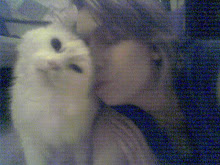In Response to the Previous Post: Teaching Feedback
So I have finally begun the arduous journey of conducting an historical research project for my History & Systems of Psychology class (yes, I'm aware the semester is halfway over already). I changed my topic and now I'm writing about the history of measurement, beginning with the first form of mental measurement, intelligence testing. But, I've started by first reviewing relevant chapters of the book, The Mismeasure of Man, by Steven J. Gould. This book was written in response to the infamous book, The Bell Curve, by Herrnstein and Murray. I have read neither, but the gist of it is the debate over the nature of intelligence, whether it is innate and unmalleable, or whether it is unmeasurable due to the complex, multidimensional, and malleable nature of the construct (in such case, we cannot deem to derive a linear quantification of the construct). The impact of the former stance on social policy is what drives the contention with The Bell Curve, I believe (since I haven't read the book, I prefer not to elaborate).
But, just by reading the first few pages about Binet, the person who developed what later became the Stanford-Binet Intelligence Test, I've decided that Binet is my hero. I admire him immensely. He cautioned against using the scale to rank and label all children. Rather, he saw the purpose of the test as solely for identifying children who needed remediation. His intent was to help the children and he believed that the test should not be considered a measure of intelligence, which is nothing but a reification that leads to false notions of a linear and quantifiable construct. But, those who brought the test to America (Goddard and Terman) fell prey to the fallacy and used the test to categorize and label children in order to impose limits on them. Such an approach to intelligence and its measurement has pervaded the American psyche ever since.
And now I think that growing up within this culture is what partly led to my response to the teaching feedback in the previous post. During childhood, I had plenty of experiences in which I fell at the bottom of the bell curve. For example, in 7th grade my teacher lined us all up at the front of the room and had us do mental arithmetic in our heads. He would increase the load until we couldn't produce the answer, at which point we had to sit down. I was always amongst the first to sit down. Such experiences reinforce the notion that we could be ranked by intelligence or ability. But, furthermore, the teacher never made any attempts to help improve the math computation ability of those who sat down first, which further reinforced the notion that our rank was unchangeable. Our own efforts at improvement would not change an innate math ability.
Thus, when affronted by such negative feedback, my first response was an acceptance of my lowly rank on teaching ability. My second response was a belief that I could not change my lowly rank by attempting to improve myself. I have set limits on myself based on a fallacy that is culturally pervasive! The next step is to see whether or not I can effect change in my own attitudes and beliefs towards the nature of intelligence.
Editor's Note: Eh! I'm probably exaggerating things a bit. It does appear that I like to make mountains out of molehills.
Labels: conceptual change, teaching




0 Comments:
Post a Comment
<< Home